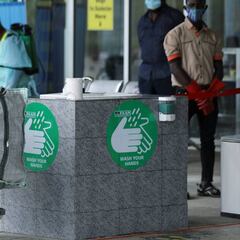Nigeria extends second phase of easing restrictions
Nigeria decided to extend phase two of easing lockdown restrictions imposed due to Covid-19 pandemic prior to moving forward to the third phase.

The Nigerian Federal Government secretary Boss Mustapha has announced extending the second phase of easing lockdown restrictions across the country by one week following a briefing held by the task force on Covid-19 on Monday, explaining that most Nigerians of different statuses and levels of education are still unaware of how dangerous the virus can be.
“We have regrettably come to the inevitable conclusion that the majority of Nigerians, irrespective of status, creed, and level of education, continue to live in denial of the virulent nature of the virus and consistently breach the guidelines and non-pharmaceutical measures put in place,” Mustapha said.
Follow all the latest coronavirus-related news in Africa on our dedicated live blog
Phase 2 extension is inevitable:
Related stories
The second phase of lifting restrictions was supposed to come to an end by the end of July when the third phase was set to begin. Mustafa, who is also the Chairman of the task force on Covid-19, stated that there were several factors that contributed to the government's decision of extending the second phase, but the most significant reason was that the end of the second phase was going to overlap with Eid Al-Adha (Islamic feast) which made it a matter of prudence for the government to keep phase two restrictions for one more week.
Mustapha also called on Nigerians to be more careful and follow safety guidelines and measures to avoid getting infected, as current statistics show a high rate of community transmission and about 65% of deaths for people older than 65 years old.

